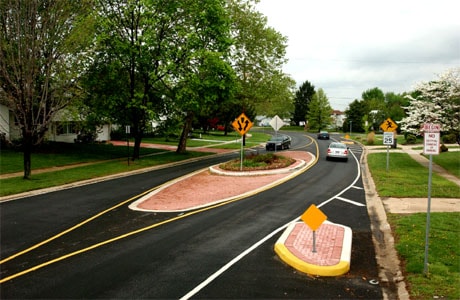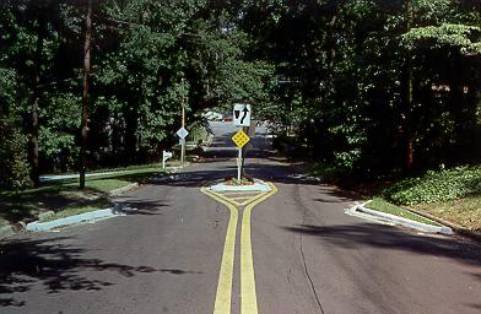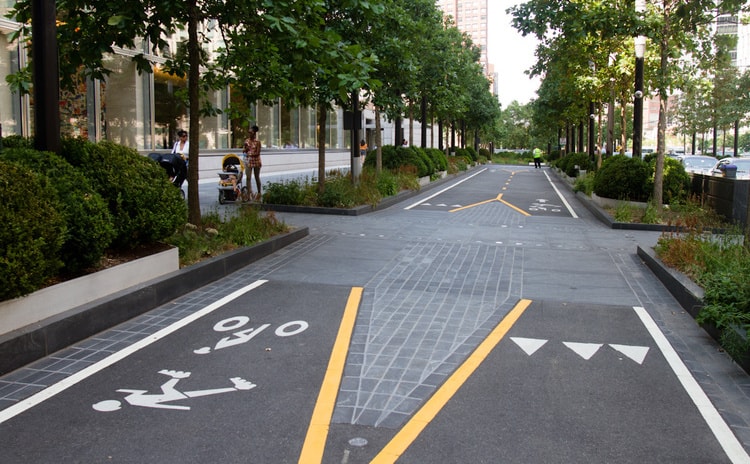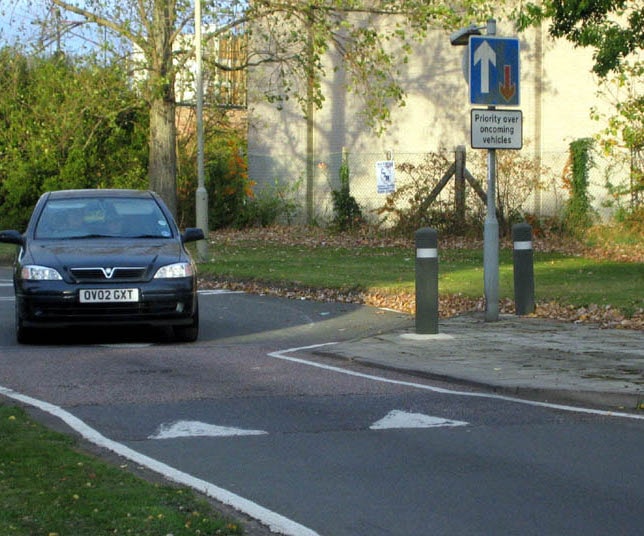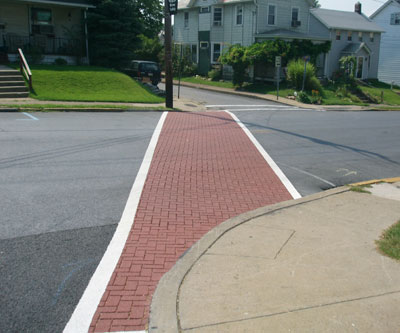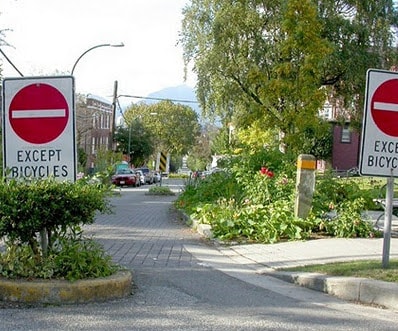Although car manufacturers across the globe claim that the recession is just history now and point to increasing vehicle sales, authorities warn that the struggle isn’t over yet, which means that we should think twice before spending every single dollar.
It’s no secret however that cities remain extremely crowded nowadays, although gas prices are continuously rising, so we all still have to face those terrible traffic jams every single morning.
Even if it’s pretty clear that all drivers simply hate traffic jams, there’s one thing however that only some authorities decide to consider: citizens and the effect of heavy traffic over them. It’s more or less obvious that heavy traffic seriously affects those living in large residential areas, not only when it comes to pedestrian safety, but also because of pollution and noise.
That’s how the concept of traffic calming attracts more fans every day. As you may guess by reading its name, traffic calm is a way to calm down traffic (doh) or, in plain English, to force drivers slow down, reduce pollution and noise, increase pedestrian safety, reduce traffic in residential areas and thus put focus on pedestrians.
Various traffic calming methods are being used all over the world with the support of local authorities.
Obviously, traffic calming can be easily done with the help of a police officer that slows down the cars, or even with the help of speed limits or traffic signs especially created to serve this purpose. But we all know that drivers don’t always obey these regulations, so the concept of traffic calming goes beyond that.
Already implemented in many locations of the world, especially in Europe and less in the United States, traffic calming comes down to visible modifications to the world. A curb, a raised cross-walk, a roundabout, each can serve as a way to calm down the traffic, as it’s almost impossible not to reduce speed in such an area.
Speed bumps are the most common traffic calming devices introduced all around the globe.
The first time the world has heard about traffic calming was in 1930s when the idea of protecting large residential areas from the increasing number of cars emerged in the United Kingdom. The used methods were almost the same, although they were a lot more efficient at that time, especially because the reduced number of cars produced a lot less noise and pollution.
As you probably know by now, many residential areas come with speed limits, in most cases a maximum of 30 km/h (20 mph), but authorities adopted more “innovative” engineering measures to support their efforts.
Speed bumps for example. Because some drivers attempt to by-pass them by going on the “wrong” side of the road, they’re installed on both sides, just to make sure everybody has to reduce speed.
To make sure they’re effective, some residential areas even use speed tables and speed humps, both designed to force drivers press the brake pedal. Beside the traffic signs we were talking about, some authorities even use raised pedestrian crossings and junctions, again meant to make you reduce speed. It’s more like “brake or break your car”, although we do know that some drivers simply don’t care about their vehicles.
Dead ends are again very important when it comes to traffic calming and, with the help of alleys, pedestrians are the only ones allowed to access specific areas.
Small chicanes and multiple curves also force drivers to slow down, while the use of alternative materials for the road could annoy drivers, but at least it’ll make them reduce speed. It’s all about pedestrians this time, you know?
As always, more luxurious residential areas could adopt “premium” traffic calm measures such as barriers and officers to block access to unauthorized vehicles.
If we have a look on statistics, it’s more than obvious that traffic calming was absolutely needed to make streets a bit safer for both pedestrians and cyclists.
According to NHTSA, no less than 73 percent of the pedestrian fatalities took place in urban areas, while 90 percent of them happened in normal weather conditions. No less than 3 million people in the United States were injured on the road in 2005, the US Department of Transportation revealed, while 43,443 people got killed during the same year.
Although they annoy drivers, traffic calming methods are mostly supposed to protect pedestrians in residential areas.
If you’re wondering, many of these fatalities happen in residential areas, as 53 percent of the fatalities registered in an 8-year time frame involved children playing on the street, according to the American Journal of Public Health.
And yes, traffic calming is effective, says ITE Traffic Calming: State of the Practice. A study that involved 43 percent traffic calming programs around the world proved that such a campaign can reduce accident by 8 to 100 percent! And American Journal of Public Health went further and added that this kind of program is a lot more effective than road safety education because it involves directly the ones behind the wheel.
Parked cars on both side of the roads can also be considered a traffic calming method as drivers are forced to reduce speed. This is probably the most affordable method to support this concept.
As you can see, traffic calming isn’t the kind of concept that’s limited to a single technology, and it’s more like a project that can be further improved with the efforts of authorities around the world. Of course, we do know various other methods are used all over the globe, so use the comment box below to tell us and the other readers about them.
Even if it’s pretty clear that all drivers simply hate traffic jams, there’s one thing however that only some authorities decide to consider: citizens and the effect of heavy traffic over them. It’s more or less obvious that heavy traffic seriously affects those living in large residential areas, not only when it comes to pedestrian safety, but also because of pollution and noise.
That’s how the concept of traffic calming attracts more fans every day. As you may guess by reading its name, traffic calm is a way to calm down traffic (doh) or, in plain English, to force drivers slow down, reduce pollution and noise, increase pedestrian safety, reduce traffic in residential areas and thus put focus on pedestrians.
Various traffic calming methods are being used all over the world with the support of local authorities.
Obviously, traffic calming can be easily done with the help of a police officer that slows down the cars, or even with the help of speed limits or traffic signs especially created to serve this purpose. But we all know that drivers don’t always obey these regulations, so the concept of traffic calming goes beyond that.
Already implemented in many locations of the world, especially in Europe and less in the United States, traffic calming comes down to visible modifications to the world. A curb, a raised cross-walk, a roundabout, each can serve as a way to calm down the traffic, as it’s almost impossible not to reduce speed in such an area.
Speed bumps are the most common traffic calming devices introduced all around the globe.
The first time the world has heard about traffic calming was in 1930s when the idea of protecting large residential areas from the increasing number of cars emerged in the United Kingdom. The used methods were almost the same, although they were a lot more efficient at that time, especially because the reduced number of cars produced a lot less noise and pollution.
As you probably know by now, many residential areas come with speed limits, in most cases a maximum of 30 km/h (20 mph), but authorities adopted more “innovative” engineering measures to support their efforts.
Speed bumps for example. Because some drivers attempt to by-pass them by going on the “wrong” side of the road, they’re installed on both sides, just to make sure everybody has to reduce speed.
To make sure they’re effective, some residential areas even use speed tables and speed humps, both designed to force drivers press the brake pedal. Beside the traffic signs we were talking about, some authorities even use raised pedestrian crossings and junctions, again meant to make you reduce speed. It’s more like “brake or break your car”, although we do know that some drivers simply don’t care about their vehicles.
Dead ends are again very important when it comes to traffic calming and, with the help of alleys, pedestrians are the only ones allowed to access specific areas.
Small chicanes and multiple curves also force drivers to slow down, while the use of alternative materials for the road could annoy drivers, but at least it’ll make them reduce speed. It’s all about pedestrians this time, you know?
As always, more luxurious residential areas could adopt “premium” traffic calm measures such as barriers and officers to block access to unauthorized vehicles.
If we have a look on statistics, it’s more than obvious that traffic calming was absolutely needed to make streets a bit safer for both pedestrians and cyclists.
According to NHTSA, no less than 73 percent of the pedestrian fatalities took place in urban areas, while 90 percent of them happened in normal weather conditions. No less than 3 million people in the United States were injured on the road in 2005, the US Department of Transportation revealed, while 43,443 people got killed during the same year.
Although they annoy drivers, traffic calming methods are mostly supposed to protect pedestrians in residential areas.
If you’re wondering, many of these fatalities happen in residential areas, as 53 percent of the fatalities registered in an 8-year time frame involved children playing on the street, according to the American Journal of Public Health.
And yes, traffic calming is effective, says ITE Traffic Calming: State of the Practice. A study that involved 43 percent traffic calming programs around the world proved that such a campaign can reduce accident by 8 to 100 percent! And American Journal of Public Health went further and added that this kind of program is a lot more effective than road safety education because it involves directly the ones behind the wheel.
Parked cars on both side of the roads can also be considered a traffic calming method as drivers are forced to reduce speed. This is probably the most affordable method to support this concept.
As you can see, traffic calming isn’t the kind of concept that’s limited to a single technology, and it’s more like a project that can be further improved with the efforts of authorities around the world. Of course, we do know various other methods are used all over the globe, so use the comment box below to tell us and the other readers about them.
